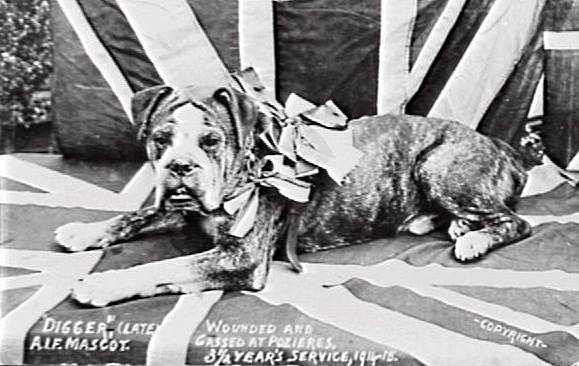
What was the breed of the very first dog sworn and signed into the Marine Corp in 1943?
We’d bet most readers will guess it was a Doberman Pinscher, and it would be a reasonable answer. After all, the Marine Corps had the first large dog unit in the nation’s history to see action against the enemy, and enrolled in the Marine War Dog Training School were fourteen Doberman Pinschers donated by the Baltimore, Maryland and Canton, Ohio members of the Doberman Pinscher Club of America.
It was not, however, a Doberman Pinscher that would become the very first dog sworn and signed into the Marine Corp. That distinction went to a Boxer named, “Fritz” who joined the Dobermans at the War Dog Training Center in Camp Knox, site of a former CCC camp at Camp Lejeume, North Carolina. Naturally, he was assigned the service number “1,” and had an indelible ink ID branding on the underside of his right earflap. In the training notes, Fritz was described as being a “very tractable dog and excellent worker.”
We couldn’t find a photo of Fritz, but we did come across the postcard seen here with the inscription: “Digger” (Late) A.I.F. Mascot. Wounded and Gassed at Pozieres 3 1/2 Year’s Service, 1914-18.” According to Australian War Memorial records, the postcard depicting Digger laying on the Union Jack flag, was made to raise money to buy cod liver oil needed to treat the burn wounds he suffered while accompanying his master, Sergeant James Harold Martin, in the First World War battle at Pozieres, France in 1916. The Australian War Memorial not only had in its collection the ornamental silver collar that Digger is wearing in the photo, but also his tanned hide. Why they kept his skin, we don’t know. In today’s world, it would likely be thought a grizzly momento of an important dog.

Don’t know if it happens anymore, but it was not uncommon for Akita owners or breeders in Japan to keep tanned hides of their best dogs after death, providing anexample of the correct coat.
I would imagine that back then, keeping his skin was thought of as a way to honor a truly special dog, much in the way that Hachiko’s coat was preserved in Japan. Seems grisly today, but I’m sure intended as an honor.